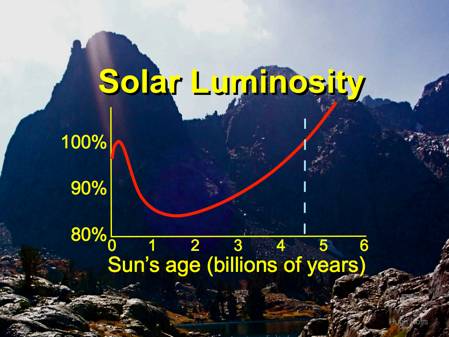Earth’s Primordial Atmosphere Must Be Fine-Tuned
An adult human can last 40 days without food, a week without any sleep, three days without water, but only five minutes without air. Yet nothing is more taken for granted than the air we breathe. However, not just any air will do—it must be exquisitely designed to meet our needs.
Too little oxygen in the atmosphere will kill us, as will too much. The same kind of fine-tuning needs apply to atmospheric nitrogen, carbon dioxide, ozone, and water vapor.
A team of eight planetary scientists recently discovered that Earth did not always possess its present-day atmospheric composition.1 (Table 1 lists the different chemicals and their relative abundances for the present-day atmosphere.) The team also found that differing atmospheric compositions throughout Earth’s history played crucial roles in enabling our planet to support life for several billion years and in particular to make advanced life possible.
| Gas Component | Percent Abundance by Volume |
|---|---|
| nitrogen | 77.77 |
| oxygen | 20.86 |
| argon | 0.93 |
| water vapor | 0.40 (1–4% at surface) |
| carbon dioxide | 0.039 |
| neon | 0.002 |
| all other gas components combined | less than 0.001 |
To determine the impact of the Sun’s radiation on Earth’s atmosphere during the Sun’s first 800 million years, the planetary science team took advantage of astronomers’ detailed knowledge of the Sun’s properties during that epoch (see figure 1). They showed that if Earth’s atmosphere were the same then as it is now, the solar wind and ultraviolet radiation would have completely removed the planet’s atmosphere within a few million years or less. Since this removal did not happen, the team concluded that Earth’s primordial atmosphere must have differed substantially from its present one.

Figure 1: Level of Solar Flaring throughout the Sun’s Burning History
The intensities of the Sun’s ultraviolet radiation, flaring activity, and wind started off at very high levels, subsided to minima when the Sun reached 4.6 billion years old (its present age), and then will gradually increase hereafter.
Image credit for background image: NASA
The team then produced calculations demonstrating that the only reasonable scenario for explaining why the Sun’s radiation did not remove Earth’s primordial atmosphere was that the early Earth’s atmosphere was at least a hundred times richer in carbon dioxide. Such an extremely carbon-dioxide rich atmosphere, the team proved, would have confined our planet’s upper atmosphere to within Earth’s magnetosphere. (The magnetosphere shields Earth’s atmosphere from destructive damage by solar radiation.)
The extra carbon dioxide in the primordial atmosphere serves another benefit for Earth’s life. It trapped much more of the Sun’s heat. Since the Sun was about 15 percent dimmer at the time (see figure 2), such enhanced heat-trapping capacity enabled life to exist at that time. With the Sun getting progressively brighter throughout the past 3.5 billion years, it then became crucial for life’s ongoing existence that Earth’s atmosphere lose carbon dioxide progressively. Such losses posed no problem for the preservation of the planetary atmosphere because as the Sun brightened, its radiation also became progressively less destructive.

Figure 2: The Sun’s Brightness throughout Its Burning History
The luminosity or brightness levels are all relative to the Sun’s present luminosity (dotted line).
Image credit for background image: Hugh Ross
Though not mentioned in their paper, the planetary science team’s research adds to the already overwhelming evidence for the rare Earth doctrine. Not only must the various constituents that make up Earth’s present-day atmosphere be carefully fine-tuned, those constituents must vary in highly specified ways throughout all of Earth’s history. The team’s research provides yet one more example of how the more scientists learn about Earth’s properties the more evidence they establish that our home planet was supernaturally designed for life and especially for human beings and their global, high-technology civilization.
Endnotes
- H. I. M. Lichtenegger et al., “Aeronautical Evidence for Higher CO2 Levels during Earth’s Hadean Epoch,” Icarus 210 (November 2010): 1–7.





